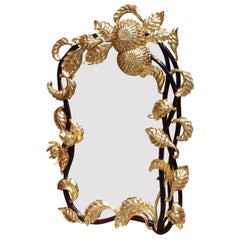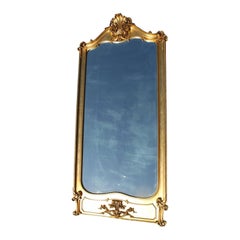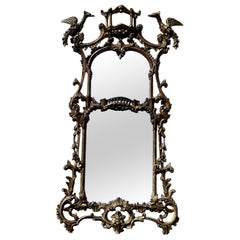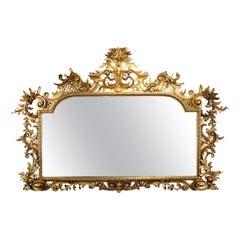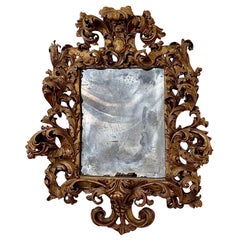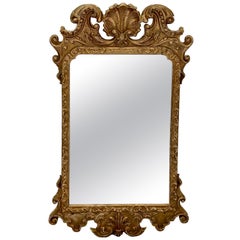Wood Carved Mirror
Early 20th Century French Art Nouveau Pier Mirrors and Console Mirrors
Mahogany
Vintage 1920s French Belle Époque Pier Mirrors and Console Mirrors
Mirror, Giltwood
2010s Organic Modern Wall Mirrors
Glass, Wood, Teak, Reclaimed Wood
Early 20th Century French Baroque Wall Mirrors
Wood
Antique Late 19th Century European Chinese Chippendale Wall Mirrors
Gold Leaf
Antique Early 1900s Rococo Revival Mantel Mirrors and Fireplace Mirrors
Mirror, Giltwood
Antique 18th Century Rococo Wall Mirrors
Gold Leaf
Antique Early 1900s Italian Rococo Revival Wall Mirrors
Marble
Antique 19th Century English Georgian Wall Mirrors
Giltwood
Antique 19th Century English Chinese Chippendale Wall Mirrors
Glass, Giltwood
Antique Late 19th Century British Adam Style Wall Mirrors
Giltwood
Early 20th Century American Wall Mirrors
Wood
20th Century Italian Wall Mirrors
Mirror, Wood
Early 2000s American Art Nouveau Wall Mirrors
Wood
Vintage 1920s Spanish Sunburst Mirrors
Gold Leaf
Mid-20th Century Belgian Hollywood Regency Wall Mirrors
Wood
Mid-20th Century Italian Rococo Wall Mirrors
Mirror, Wood
Mid-20th Century Dutch Baroque Wall Mirrors
Mirror, Wood
2010s Mexican Wall Mirrors
Wood
Mid-20th Century North American Hollywood Regency Table Mirrors
Mirror, Wood
Vintage 1960s Adam Style Wall Mirrors
Wood
20th Century Wall Mirrors
Wood
Vintage 1980s French Provincial Wall Mirrors
Wood, Mirror, Giltwood
Antique Late 19th Century American Wall Mirrors
Wood
Vintage 1940s French Wall Mirrors
Wood, Mirror
20th Century Spanish Neoclassical Wall Mirrors
Silver Leaf
Vintage 1940s Spanish Wall Mirrors
Wood
Antique Late 19th Century French Late Victorian Wall Mirrors
Mirror, Wood, Oak
Vintage 1940s Wall Mirrors
Mirror, Wood
Antique 19th Century French Rococo Wall Mirrors
Mirror, Wood
Mid-20th Century American Chippendale Wall Mirrors
Mirror, Wood
Vintage 1920s Spanish Wall Mirrors
Mirror, Giltwood
Early 20th Century Italian Renaissance Revival Wall Mirrors
Mirror, Oak
Mid-20th Century American Regency Wall Mirrors
Mirror, Wood
Vintage 1980s French Baroque Wall Mirrors
Silver Leaf
Early 2000s American Modern Wall Mirrors
Mirror, Wood
Vintage 1950s French Rustic Wall Mirrors
Mirror, Wood
Antique 1860s Napoleon III Wall Mirrors
Mirror, Giltwood
Vintage 1940s French Wall Mirrors
Glass, Mirror, Wood
Late 20th Century Modern Wall Mirrors
Wood
21st Century and Contemporary French Napoleon III Wall Mirrors
Wood
Mid-20th Century Spanish Baroque Sunburst Mirrors
Gold Leaf, Silver Leaf
Early 20th Century French Louis XIV Wall Mirrors
Mirror, Oak
Vintage 1980s Mid-Century Modern Wall Mirrors
Mirror, Wood
Antique Early 1900s French Folk Art Wall Mirrors
Mirror, Wood, Oak
20th Century Spanish Modern Wall Mirrors
Mirror, Wood
2010s Chinese Neoclassical Revival Wall Mirrors
Mirror, Paint, Wood
Antique 19th Century French Wall Mirrors
Wood
Antique 19th Century French Louis XVI Wall Mirrors
Mirror, Wood
Late 20th Century American Wall Mirrors
Mirror, Wood
Mid-20th Century American Wall Mirrors
Mirror, Wood
Antique 19th Century English Rococo Wall Mirrors
Mirror, Giltwood
20th Century Wall Mirrors
Wood, Mirror
Antique Early 1900s Spanish Wall Mirrors
Mirror, Wood
Mid-20th Century American Rustic Wall Mirrors
Mirror, Wood
Vintage 1920s French Renaissance Wall Mirrors
Mirror, Wood
21st Century and Contemporary European Aesthetic Movement Wall Mirrors
Wood
Mid-20th Century Spanish Renaissance Revival Wall Mirrors
Mirror, Wood
- 1
- ...
Wood Carved Mirror For Sale on 1stDibs
How Much is a Wood Carved Mirror?
- 1stDibs ExpertApril 5, 2022There are many methods and types of wood carving, including chip, relief, Scandinavian flat-plane, lovespoon, whittling and florentine. Each type uses different tools and can create decorative carvings on both display pieces and furniture. Browse a wide range of carved wood pieces on 1stDibs.
- What is Japanese wood carving?1 Answer1stDibs ExpertApril 5, 2022Japanese wood carving is an art form in which artists produce intricate figurines and other objects by cutting and shaping blocks of zelkova, camphor or paulownia wood. In Japanese, the artwork is known as inami. Find a selection of Japanese wood carvings on 1stDibs.
- What is Chinese wood carving?1 Answer1stDibs ExpertApril 5, 2022A Chinese wood carving is a decorative object carved by hand by Chinese artisans out of local wood, such as nanmu, zitan, bomu or yinxing. This form of sculpture is sometimes called mudiao. On 1stDibs, find a range of Chinese wood carvings.
- What is a Paete wood carving?1 Answer1stDibs ExpertMay 5, 2023A Paete wood carving is a decorative wooden object produced by artisans in Paete, Philippines. In 2005, the village was officially dubbed the Woodcarving Capital of the Philippines due to the intricate sculptures and statues produced there. Shop a variety of wood art from some of the world’s top galleries on 1stDibs.
- What is Jepara wood carving?1 Answer1stDibs ExpertApril 5, 2022Jepara wood carving is the intricate wood carving art that comes from the city of Jepara in Indonesia. Artisans typically work with teak wood to create beautiful carved detail and scenes in a piece of furniture. Shop a collection of Jepara wood carvings on 1stDibs.
- 1stDibs ExpertNovember 4, 2024To identify wood carvings, get a magnifying glass and inspect your items. Some artisans marked their carvings with symbols or signed them. Researching any markings found on your carving may allow you to identify the maker who produced it and potentially learn more about the piece from there. If you're unable to find a maker's mark, the best approach is likely to use the services of a certified appraiser or other knowledgeable expert. On 1stDibs, explore a selection of wood carvings.
- 1stDibs ExpertOctober 19, 2021The difference between carving and sculpture is that carving is a carved object, whereas sculpture is the art of shaping figures or designs — because sculpture can involve adding material (i.e., working with plaster, creating a mold to be cast in bronze), it is considered “additive” versus the “subtractive” act of carving.
- 1stDibs ExpertApril 5, 2022In Bali, many different types of woods are used for carving. Some examples include albesia, crocodile wood, rain tree, hibiscus, jackfruit, teak, mahogany and sandalwood. On 1stDibs, you can shop a range of Balinese wood art, furniture and decorative objects.
- 1stDibs ExpertApril 5, 2022Antique carved wood can be identified by how it is made. Antique carvings were done by hand, so nicks and cuts will indicate carvings completed with a plane or knife. In addition, hand-carved wood will not be uniform or have perfect symmetry. Always works with a certified appraiser to determine the exact date and value of an item. Find a variety of antique carved wood furniture and decor on 1stDibs.
- 1stDibs ExpertJune 15, 2023To tell if wood is hand-carved, first look for small marks in the wood that indicate hand tools were used to cut and shape the material. Hand-carved pieces may also have small irregularities, particularly along curved areas. However, it may be very difficult to tell the difference between machine-worked and hand-carved pieces in some cases. On 1stDibs, shop a range of wood furniture and decorative objects.
- 1stDibs ExpertApril 5, 2022In Bali, Indonesia, Jackfruit is considered the best wood when it comes to carving. Jackfruit is a medium hardwood, resistant to termite attacks and is easy to polish. You’ll find a variety of Indonesian carvings from some of the world’s top sellers on 1stDibs.
- 1stDibs ExpertMarch 31, 2023What wood is used for African wood carvings varies. Iroko, mahogany and ebony are frequently chosen materials, but artisans may choose to work with whatever wood is available in their local areas. Shop a variety of African wood art from some of the world's top galleries on 1stDibs.
- What is carved wood art called?1 Answer1stDibs ExpertMarch 3, 2023What carved wood art is called depends on the type of piece. Three-dimensional pieces created by hand-carving wood are whittlings, while carvings into a flat piece of wood are reliefs. Shop a collection of wood art from some of the world's top galleries on 1stDibs.
- 1stDibs ExpertApril 5, 2022Carved African wood figurines were typically spiritual in nature and were primarily in human form. The wood figurines were carved using ebony, teak, mahogany and iron wood. On 1stDibs, find a collection of authentic African wood figurines from some of the world’s top sellers.
Read More
20 Artfully Crafted Mirrors to Frame Your Reflection
In "Object Permanence 4," on view at the 1stdibs Gallery, Emma Holland Denvir and Leah Ring have brought together pieces that range from polished to playful.
Unexpected Furniture Pieces Made from Clay
A new generation of creative minds is reinventing the use of clay through sculptural forms and bold ideas.
5 Standout Contemporary Mirrors (and How to Decorate with Them)
Leading talents tell us what goes into their mirrored creations and where to put them on a wall.
12 Rooms with Dramatic, Unexpected Mirrors
These are the fairest of them all.
